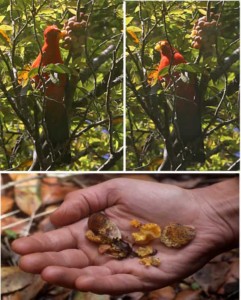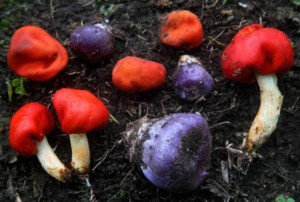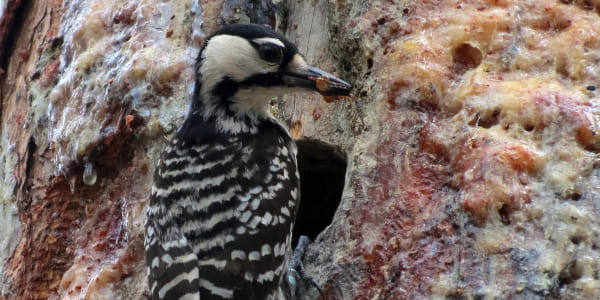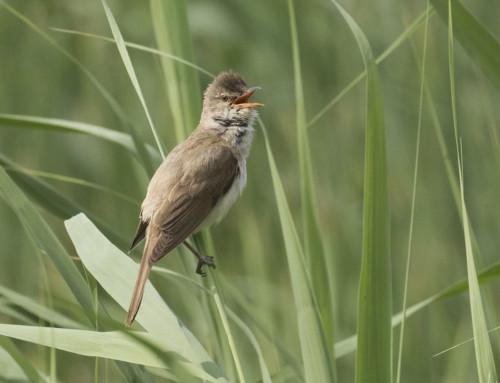LINKED PAPER
A global review of the ecological significance of symbiotic associations between birds and fungi. Elliott, T.F., Jusino, M.A., Trappe, J.M., Lepp, H., Ballard, G., Bruhl, J.J., & Vernes, K. 2019. Fungal Diversity. DOI: 10.1007/s13225-019-00436-3. VIEW
Among professional scientists and amateur nature enthusiasts, there is significant effort and interest dedicated to understanding both birds and fungi. Despite human fascination with these diverse organisms, surprisingly little research has focused on ornithomycological (bird-fungal) interactions and the possible coevolution of birds and fungi. In our recent global review paper published in the journal Fungal Diversity, we assess the ecological implications of these associations. Our study illustrates that fungi are particularly important to the biology of birds for feeding and nesting. Our review shows that at least 54 bird species in 27 families are mycophagous (they eat fungi). Nesting associations with fungi primarily involve cavity-excavating birds and open-nesting birds. Among cavity-excavating birds, we found that at least 30 bird species in three families form associations with decay fungi that seem to facilitate cavity excavation for the birds. Among open-nesting birds, we found evidence that at least 176 bird species in 37 families use fungal material in their nest construction.

Figure 1 Australian King Parrots Alisterus scapularis feeding on the colourful fungus Cyttaria septentrionalis. These parrots are one of several species of birds and mammals that eat members of this fungal genus © Todd F. Elliott. To read further details about the consumption and dispersal of this group of fungi, see: https://doi.org/10.1111/aec.12711
Bird mycophagy (Fig. 1) serves several ecological functions; some of these directly impact birds, and others are more generally important to ecosystems. Fungi perform a multitude of ecosystem functions that include decomposition of organic material and assistance with plant nutrient uptake. Plant roots are relatively inefficient at nutrient absorption unless they form mycorrhizal associations, and some fungi eaten by birds form these associations with plants. Since fungi are rich in minerals and contain a substantial amount of water, their nutritional value is the most obvious direct benefit to birds that consume them. One of the less obvious ecological benefits is fungal spore dispersal. Some groups of fungi eaten by birds form truffle-like fruiting bodies below ground, and their distribution via animal scats is an important mode of dispersal. We found evidence that in some landscapes such as the deserts of the Middle East, birds flock to areas where mycorrhizal desert truffles are fruiting; by eating these truffles, the birds may be contributing to the long-distance dispersal of several fungal species. Local hunters use birds as indicators of where the truffles are and also use truffles as bait to trap several species of birds. Mycophagy and the resulting ecological associations have been thoroughly studied among mammals, but human fragmentation of landscapes is making it increasingly difficult for mammals to travel. Since most birds fly and many travel large distances, they may become one of the most essential fungal dispersers in the future. Bird feeding behaviours may have applied selective pressures on fungi and lead to different colours or fruiting morphologies. The incredible diversity of colourful truffles in New Zealand (Fig. 2) is arguably a result of selective pressures from ground-foraging, visually-cued birds.


A particularly well known association occurs between woodpeckers and fungi. In his 1917 book Birds of America, Gilbert Pearson wrote:
“To begin with, the nesting cavity is always dug in a living pine tree. Wise lumbermen do not cut a tree that has a nest of this bird in it, for if they do they will have their labor for nothing. The tree has a dead heart. How the little woodpecker knows this in advance has not yet been revealed.”
We’ve made some progress since the early observations of naturalists linking woodpecker excavation with visible signs of wood-decaying fungi, but there is still a long way to go. Early researchers relied on the presence of fungal fruiting bodies (often conks) to determine these associations and usually only recognized a single fungal species as the cause; availability of molecular analysis is now revealing that these associations are far more complex. Molecular-based techniques and DNA barcode identification have revealed a far greater diversity of fungi associates linked to cavity excavators than previously imagined. In some cases, dozens or even hundreds of species live in the wood surrounding excavations and/or are being carried by birds; these birds significantly impact fungal community assembly within the wood. There are two major hypotheses/questions that have arisen from this research. Are birds choosing trees based on the fungi already present in the wood, or are the birds facilitating fungal inoculation of the wood? There is also the possibility that both tree selection and bird facilitation occur in some systems. It is increasingly clear that the ecology of these birds is deeply interconnected with the ecology of diverse communities of decay fungi.
Much remains to be discovered about the relationships between cavity excavating birds and fungi. Although it has been hypothesized that these interactions are mutualistic, definitive experimental evidence has yet to be found. It is unknown whether birds and fungi have co-evolved and co-adapted to mutual partnerships. While it is now apparent that some woodpeckers are associated with diverse communities of fungi, it is not clear how many and which species of fungi are important to which birds. Recent increases in research interest and advancing methodologies promise more discoveries in the near future.


Nest building birds use an array of materials—including fungi—in nest construction. In many tropical regions, birds regularly use a type of fungal tissue called rhizomorphs. One of the most frequently used rhizomorphs is produced by a group of small umbrella-shaped mushrooms of the genus Marasmius. These rhizomorphs frequently resemble and are often mistaken for black horse hair. Some crust fungi also inhabit twigs used by birds. Fungi used in nests sometimes continue to grow and can function as a glue to strengthen and improve the structural integrity of nests as nestlings gain weight. Some associated fungi produce potent chemical compounds that may improve nestling health and serve as ectoparasite deterrents. Though poorly studied, these associations likely play an important role in nestling success. When not being used as nesting material, rhizomorph-producing fungi frequently grow in the canopies of forests and ‘capture’ and decompose organic material before it reaches the forest floor. Mycologists call these highly specialised fungi found in many moist forest systems ‘litter-trapping fungi’. Some litter trapping fungi have seldom or never been found to form fruiting bodies, and further study may reveal that birds are key to their dispersal (Fig. 3).
References
Elliott, T.F., Jusino, M.A., Trappe, J.M., Lepp, H., Ballard, G., Bruhl, J.J., & Vernes, K. 2019. A global review of the ecological significance of symbiotic associations between birds and fungi. Fungal Diversity 98: 161–194. VIEW
Image credit
Featured image: A Red-cockaded Woodpecker Leuconotopicus borealis pauses before entering its cavity to feed nestlings. Cavities such as this one are used for many seasons and are excavated into the decaying heartwood of mature longleaf pine trees. The associations between decay fungi and these endangered woodpeckers have been more thoroughly studied than those of any other cavity excavating species © Michelle A. Jusino





